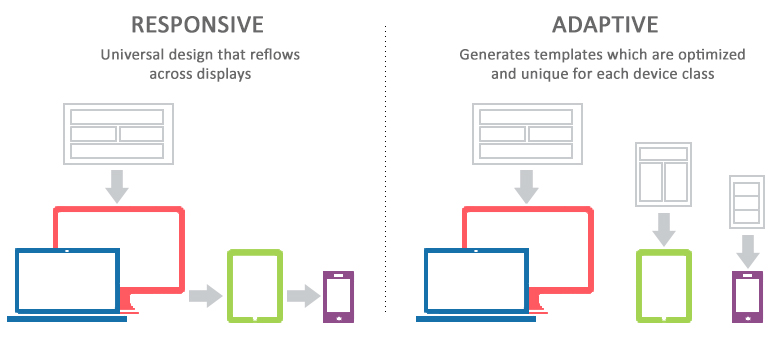

However, having too many more than that will make the development and maintenance too much to handle, so be wary. Ideally, planning for six is the standard, having a high and low resolution layout for each of the three viewports listed above. You want at least three: one for low resolution viewports (smartphones), medium resolution viewports (tablets), and one for high resolution viewports (desktops and laptops). If current site analytics show users mostly using low and medium resolution viewports, plan for those. The number of viewports you design for is entirely up to you and the developer, work out a battle plan based on your users. And by the time you reach mobile, cluttered. If you start with high resolution viewports and go down, things could end up a little…compact. Generally, it’s easier to start at low resolution viewports and work your way up. Now, you’ll design for multiple viewports, and develop them. Before responsive webdesign became a thing, you simply designed one layout and then developed it. When designing for an adaptive development approach, the work is fairly easy. In fact if you resize your window to be smaller than 1024 pixels, you’ll see this sudden change I’m talking about as the layout of this website adjusts to focus on a medium resolution viewport. These layouts are the ones that “snap” when adjusting as you resize your browser window. You only have to design for specific viewports, and browsers only display the highest one that will fit in it’s width. Because of the nature of adaptive layouts, they give much more control over the design of the website. This is also the route many people take when retrofitting an existing website to be mobile friendly. It’s easier to transition into designing and developing for these layouts, although they require more work than their responsive conterparts. When the idea of responsive webdesign first started gaining ground, adaptive techniques dominated for a while. If you’re looking for inspiration as to what responsive or adaptive layouts look like, MediaQueri.es is a popular webdesign gallery that displays four viewports of a website. From user analytics to what can or can’t be rearranged when changing viewports-designers and developers are closer than ever, if not the same person. Now though, designers and developers have to work together through both the design and development process in order for everything to go smoothly. For those of us who still have an audience in IE6 – 8 though, Scott Jehl has created a JavaScript polyfill called Respond.js that will make things work.īefore, many webdesigners had minimal communication with developers until the handoff. Most people choose to use media queries to do this, as they are rock solid unless you need support for IE8 or below. Either way, the goal is to make your website always look its best at the desired resolution. Responsive layouts generally perform better than adaptive layouts, but in some cases (complex webapps for example) an adaptive approach could serve users better. All of these practices can generally be categorized as either responsive or adaptive layouts. Others start at mobile and work up to the larger viewports, optimizing as needed. Many of these practices focus on retrofitting websites intended for high resolution down to lower sizes. Over the last few years, the industry has collectively developed a shortlist of common best practices. Responsive webdesign in itself is the process of making a website work on very small screens, very large screens, and at any resolution in between. Ideally, your website will look and function gracefully on all of the above, at any resolution. When you throw retina displays into the mix, the number of potential screen sizes is dizzying. With all things considered, a website today could be experienced on a low resolution smartphone, a medium resolution tablet, or a high resolution desktop or laptop. Smartphones revolutionized the mobile web, and tablets are throwing another wrench into the gears with their growing popularity. Responsive webdesign has become a catch-all term for making your website work well at low resolutions.


 0 kommentar(er)
0 kommentar(er)
